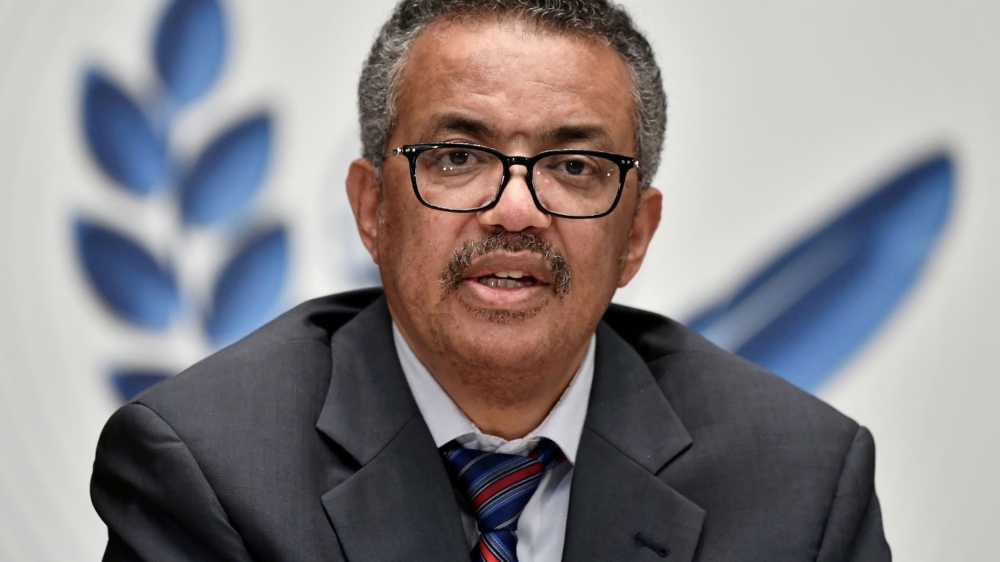
{ "@context": "https://schema.org", "@type": "NewsArticle", "dateCreated": "2024-11-17T12:07:20+02:00", "datePublished": "2024-11-17T12:07:20+02:00", "dateModified": "2024-11-17T12:30:34+02:00", "url": "https://www.newtimes.
co.rw/article/21896/opinions/for-the-first-time-the-elimination-of-a-cancer-is-within-our-reach", "headline": "For the first time, the elimination of a cancer is within our reach", "description": "Every year, over 350,000 women die from cervical cancer and another 660,000 are diagnosed. As a consequence, children are orphaned, families impoverished.
..", "keywords": "", "inLanguage": "en", "mainEntityOfPage":{ "@type": "WebPage", "@id": "https://www.
newtimes.co.rw/article/21896/opinions/for-the-first-time-the-elimination-of-a-cancer-is-within-our-reach" }, "thumbnailUrl": "https://www.
newtimes.co.rw/thenewtimes/uploads/images/2024/11/17/64271.
jpeg", "image": { "@type": "ImageObject", "url": "https://www.newtimes.co.
rw/thenewtimes/uploads/images/2024/11/17/64271.jpeg" }, "articleBody": "Every year, over 350,000 women die from cervical cancer and another 660,000 are diagnosed. As a consequence, children are orphaned, families impoverished and communities diminished by the loss of mothers, wives, daughters and sisters.
And yet, unlike most other cancers, almost all these cases and deaths can be averted. We have powerful vaccines that can prevent infection with the human papillomavirus (HPV) that causes cervical cancer; we have diagnostics to detect it early; and we have treatments for those it strikes. With these tools, cervical cancer can not only be stopped; it could become the first cancer to be eliminated.
Some high-income countries are already close to elimination, meaning fewer than four cases per 100,000 women. But in many low- and middle-income countries, these tools are still not available, which is why 94% of cervical cancer deaths occur in those countries. The double tragedy of cervical cancer is that this is not just a health issue; it is an equity issue.
Today marks a global “Day of Action for Cervical Cancer Elimination,” with vaccination drives, screening campaigns, and advocacy events. Iconic landmarks are being lit up in teal, including Rio de Janeiro’s iconic Christ the Redeemer monument, which will welcome world leaders as they arrive for the G20 Summit, which starts tomorrow. In 2018, WHO launched a global call to action to eliminate cervical cancer, which was followed in 2020 by the adoption by all 194 WHO Member States of a Global Strategy to Accelerate the Elimination of Cervical Cancer as a Public Health Problem.
The strategy calls for countries to achieve three targets by 2030: 90% of girls fully immunized against HPV; 70% of women receiving timely screening; and 90% of those found with precancer or cancer accessing treatment. These targets are not just aspirational, they are achievable, even in low- and middle-income countries. Bhutan has already reached the targets, the first to do so in the South-East Asia region.
Since introducing the HPV vaccine in 2011, Rwanda has reached vaccine coverage of 90%, and today announced its national goal to reach the 90-70-90 targets three years ahead of schedule, by 2027. Already, in two districts – Gicumbi and Karongi – Rwanda is meeting those goals. Nigeria, which introduced the HPV vaccine in October last year, has already vaccinated 12.
3 million girls. We have the tools and the opportunity to eliminate cervical cancer. Realizing that opportunity requires determined political leadership.
As world leaders arrive in Rio de Janeiro today for the G20 Leaders’ Summit, we need their commitment to maximize access to the tools that can deliver it. First, we call on G20 leaders to support access to HPV vaccines for all girls, in all countries. Since WHO issued the global call to action in 2018, more than 60 countries have introduced the HPV vaccine into their immunization programmes, bringing the total to 144 countries that are routinely protecting girls from cervical cancer in later life.
With scientific advances, we can now prevent cervical cancer with just a single dose, which 60 countries are now doing. The largest provider of HPV vaccines to low- and middle-income countries is Gavi, the Vaccine Alliance, which plans to vaccinate 120 million children between now and 2030. But this plan requires that investments in health are sustained.
We are also counting on manufacturers to confirm and honour their commitments to provide HPV vaccines to low- and middle-income countries in the coming years, to avoid the supply constraints that held back progress in the past. But we cannot rely on vaccines alone. The impact of the rapid scale-up in vaccinating girls now will not be seen for decades, when they reach the adult years when cervical cancer typically appears.
To save lives now, we must match the increase in vaccination with increases in screening and treatment. So second, we call on G20 leaders to support access to screening in all countries. Decades ago, as more women gained access to pap smears in developed countries, the mortality associated with cervical cancer dropped rapidly.
Today, even better tests are available. Over 60 countries now include high-performance HPV tests as part of their screening programs. Women can even collect their own samples for HPV testing, removing more barriers to life-saving services.
In Australia – which is on track to become one of the first countries in the world to achieve elimination – more than a quarter of all screening tests are now done this way. We call on leaders to move beyond ad hoc, opportunistic testing by investing in organized screening programmes that will support high coverage for the whole population. That is critical for reaching the 70% target.
However, high test prices and vendor mark-ups are also still a barrier. Several countries are also investigating the use of artificial intelligence to enhance the accuracy of screening in resource-limited settings. When women are found with precancerous lesions, many are now treated with portable battery-powered devices, which can be operated in remote locations.
Third, we call on G20 leaders to support expanded access to treatment in all countries. Advanced cases need to be referred for surgery, radiotherapy and palliative care. But in many cases, women with cervical cancer die simply because the treatments used in high-income countries are not available where they live.
In countries where radiotherapy equipment is broken, women wait in vain as their tumors grow. No woman should have to travel abroad in search of a cure, or die waiting, when the equipment to cure her is installed in her own country. The COVID-19 pandemic demonstrated the extraordinary power of vaccines, tests and treatments to save lives, but also the inequities in access that result in preventable deaths.
On today’s Global Day of Action for Cervical Cancer Elimination, we urge all leaders, all sectors and all communities to join us in ending cervical cancer once and for all.", "author": { "@type": "Person", "name": "Dr Tedros Adhanom Ghebreyesus" }, "publisher": { "@type": "Organization", "name": "The New Times", "url": "https://www.newtimes.
co.rw/", "sameAs": ["https://www.facebook.
com/TheNewTimesRwanda/","https://twitter.com/NewTimesRwanda","https://www.youtube.
com/channel/UCuZbZj6DF9zWXpdZVceDZkg"], "logo": { "@type": "ImageObject", "url": "/theme_newtimes/images/logo.png", "width": 270, "height": 57 } }, "copyrightHolder": { "@type": "Organization", "name": "The New Times", "url": "https://www.newtimes.
co.rw/" } }.














